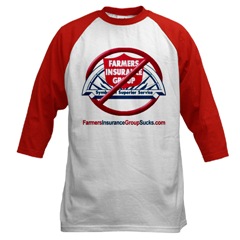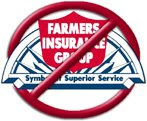Farmers Insurance Oklahoma Class Action
Court Authorized Notice to Oklahomans - Who Had Homeowner's Insurance Issued by Farmers - About Their Rights in a Class Action Lawsuit
By District Court of Comanche County, Oklahoma
LAWTON, Okla., March 31 --A statewide notice program authorized by the District Court of Comanche County, Oklahoma began today in order to issue notices to those who had homeowner's insurance issued by Farmers Insurance Company, Inc. and Farmers Insurance Exchange (the "Defendants") after June 14, 1994. The notices are a result of the Court establishing or "certifying," in August 2003, a class action lawsuit about whether the Defendants improperly withheld payments for general contractor's overhead and profit ("O&P") from amounts paid on claims under homeowner's insurance policies to citizens of Oklahoma.
The lawsuit is called Burgess et al. v. Farmers Insurance Company, Inc. et al., No. CJ-2001-292. The lawsuit includes all citizens of Oklahoma who were or are Farmers homeowners' policyholders who: (1) suffered a covered loss to their home from June 14, 1994 to the present; (2) whose loss was adjusted on an actual cash value ("ACV") basis; (3) whose claim files indicated the anticipated involvement of three trades or more in the repair of the property at the time of the ACV adjustment; and (4) whose ACV adjustment did not include a 20% payment for O&P. Generally, a claim was adjusted on an ACV basis if the initial payment from the Defendants for the covered loss had depreciation taken out. Depreciation is a decrease or loss in value that occurs because of age or wear.
The lawsuit says that the Defendants intentionally underpaid the homeowners' claims of thousands of Oklahomans by failing to provide them a payment for O&P. The Plaintiffs' claims are based on the contention that there is an industry standard three trades rule which requires payment for the services of a general contractor when three or more trades are anticipated in a home repair. The Defendants deny they have underpaid any homeowners' claims, or that they failed to provide homeowners insureds with any relevant information concerning coverage. It is the position of the Defendants that there is no industry standard three trades rule, and that the determination of whether, and when, O&P is reasonably likely to be incurred depends upon a number of different factors in addition to the number of trades. The lawsuit seeks money or benefits for the Class.
The Court has not decided whether the Class or the Defendants are right. The lawyers for the Class will have to prove their claims at a trial. The Court appointed the following lawyers from Oklahoma to represent the Class as "Class Counsel": Reggie Whitten and Michael Burrage of Whitten, Burrage, Priest, Fulmer, Anderson & Eisel; Jason Roselius and Derrick Morton of Nelson, Roselius, Terry, O'Hara & Morton; and Terry West and Bradley West of The West Law Firm.
Those who wish to remain members of the Class don't have to do anything at this time and will be informed about any claims process that results from the trial or any proposed settlement. Class members will be bound by all orders and judgments of the Court.
Class members may exclude themselves from the Class. To do so, they must mail a letter stating that they want to be excluded from Burgess v. Farmers Insurance Company, Inc., and include their name, address, telephone number, and signature. Exclusion requests must be postmarked by May 16, 2008, and sent to Burgess Exclusions, PO Box 6336, Portland, OR 97228-6336. Class members who exclude themselves from the Class cannot participate in any recovery for the Class, and will not be bound by any court orders or judgments.
For more information and a detailed Notice, Class members may write to the above address, or see the website at
Burgess v. Farmers Insurance Company (Oklahoma Class Action)
SOURCE District Court of Comanche County, Oklahoma
Plaintiffs: Derrick Morton of Nelson, Roselius, Terry, O'Hara & Morton, +1-405-705-3600; Defendants: Thomas T. Rogers of Jackson Walker L.L.P., +1-512-236-2030,


